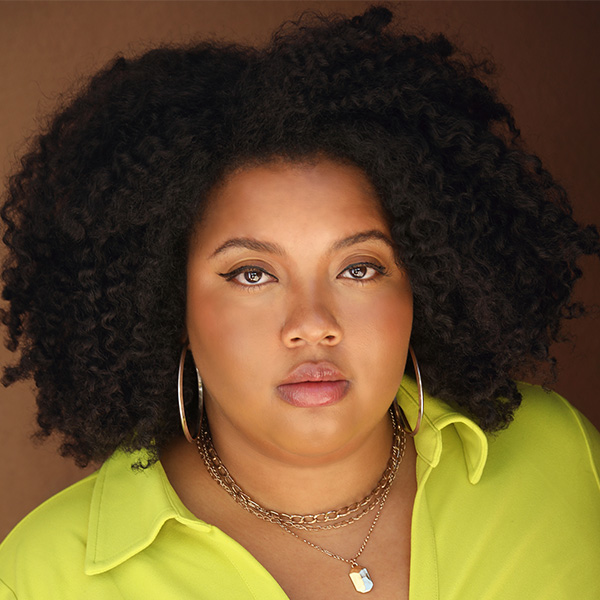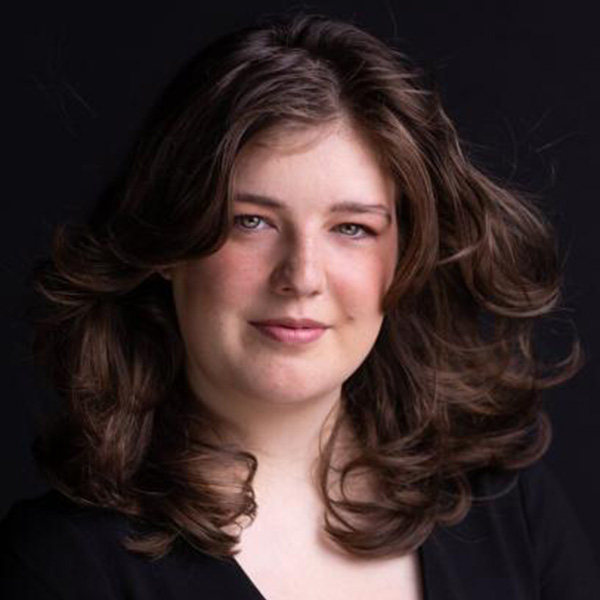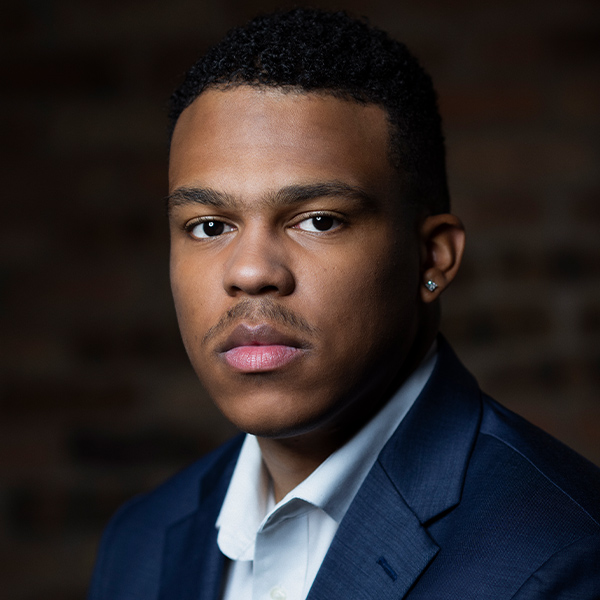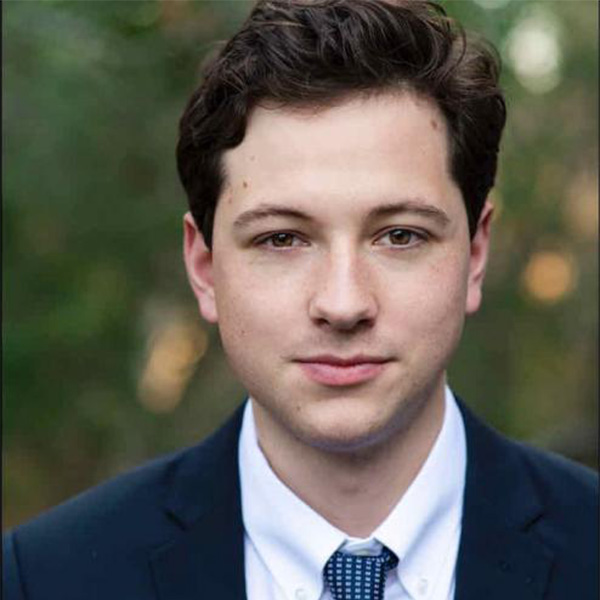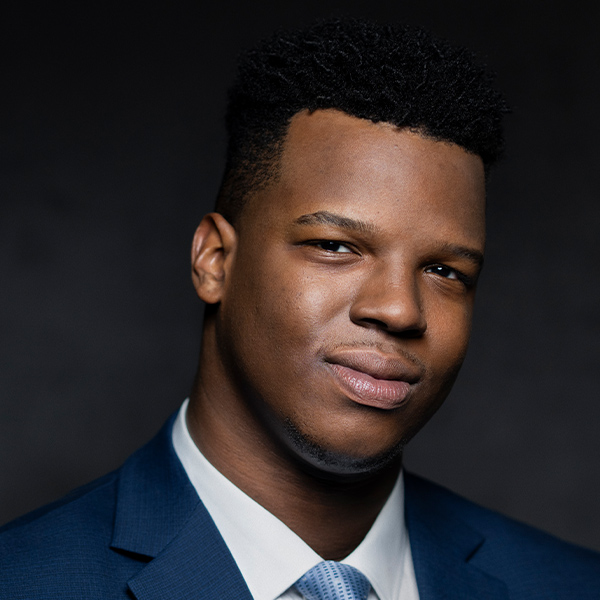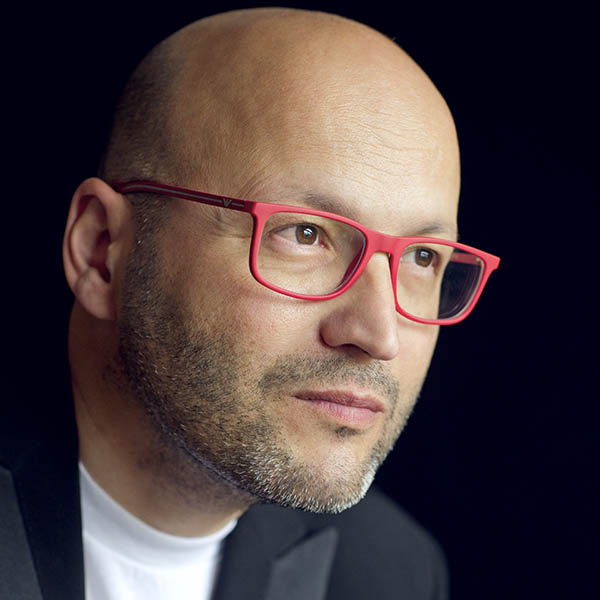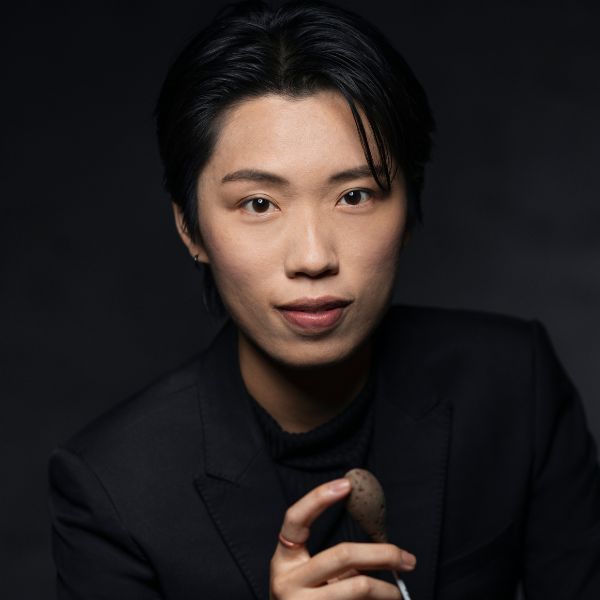
Program book
Welcome to Sunday in the Park with Lyric, the annual celebration of the start of the Chicago opera season. Tonight's performance features the artists of The Patrick G. and Shirley W. Ryan Opera Center, the Lyric Opera Orchestra under the direction of Lyric's Music Director Enrique Mazzola, and a special performance by The Joffrey Ballet.
Artists
Featuring the Lyric Opera Orchestra, and dancers from The Joffrey Ballet.
Rachel Tobias
Stage Manager
Tommy Novak and Amy C. Thompson
Assistant Stage Managers
Marinette Gomez
Ryan Opera Center Stage Director
Gemma DeCetra
Ryan Opera Center Stage Manager
Colin Ure, Amy C. Thompson
Projected English Titles
Program
Georges Bizet
Carmen, Excerpt
Choreographed by Liam Scarlett
The Joffrey Ballet company artists:
Victoria Jaiani (Carmen)
Jonathan Dole (Morales)
Guillem Cabrera Espinach (Soldier)
Davide Oldano (Soldier)
Blake Kessler (Soldier)
Reed Henry (Soldier)
Valentino Moneglia Zamora (Soldier)
Stefan Gonçalvez (Soldier)
Luigi Cherubini
Medea, Overture
Ruggero Leoncavallo
Pagliacci, “Nedda! Silvio! A quest’ora?”
Sankara Harouna (Silvio)
Emily Richter (Nedda)
Christopher Humbert, Jr. (Tonio)
W.A. Mozart
Così fan tutte, “Alla bella Despinetta”
Benjamin R. Sokol (Don Alfonso)
Travon D. Walker (Ferrando)
Finn Sagal (Guglielmo)
Alexis Peart (Despina)
Emily Richter (Fiordiligi)
Camille Robles (Dorabella)
Giacomo Puccini
Madama Butterfly, “Addio, fiorito asil”
Daniel Luis Espinal (Pinkerton)
Chi-Yuan Lin, conductor
“Un bel dì”
Adia Evans (Cio-Cio-San)
Chi-Yuan Lin, conductor
Pietro Mascagni
Cavalleria rusticana, Intermezzo
Hoagy Carmichael / Stuart Gorrell
“Georgia on My Mind”
Travon D. Walker
Michael Banwarth, piano
Harold Arlen / E. Y. “Yip” Harburg
“Lydia, the Tattooed Lady”
Benjamin R. Sokol
Michael Banwarth, piano
Gioachino Rossini
The Barber of Seville, “Largo al factotum”
Sihao Hu (Figaro)
Chi-Yuan Lin, conductor
“Dunque io son”
Camille Robles (Rosina)
Finn Sagal (Figaro)
Chi-Yuan Lin, conductor
Georges Bizet
Carmen, “Près des remparts de Séville”
Alexis Peart (Carmen)
Daniel Luis Espinal (Don José)
“Votre toast”
Christopher Humbert, Jr. (Escamillo)
Ensemble
Program notes
Medea, Overture
Luigi Cherubini
Medea tickets
Italian-born Luigi Cherubini was already a huge success in Paris by 1797, when he composed Médée (Medea) for the city’s Théâtre Feydeau. Although not terribly successful initially, the opera was presented in German and Italian translations on numerous occasions throughout the nineteenth century. Audiences and opera houses were apparently uninterested in the spoken dialogue, which led the German composer, Franz Lachner, to adapt it into recitatives. It’s through that version — premiered in Italian in 1909 — that audiences have generally come to know this opera. Its fortunes were transformed in no small part by Maria Callas’s definitive assumption of the title role, with which she introduced a generation of operagoers to Medea in Europe (Italy, England, Greece) and America (Dallas) during the 1950s and early 1960s.
Preceding the stunning events of this monumental Greek tragedy is its magnificent, grand-scale overture. Its requirements include tremendous verve and dazzling virtuosity, but also, in the opening pages as well as later on, a balefully dramatic mood. The piece has become a favorite of concert audiences all over the world.
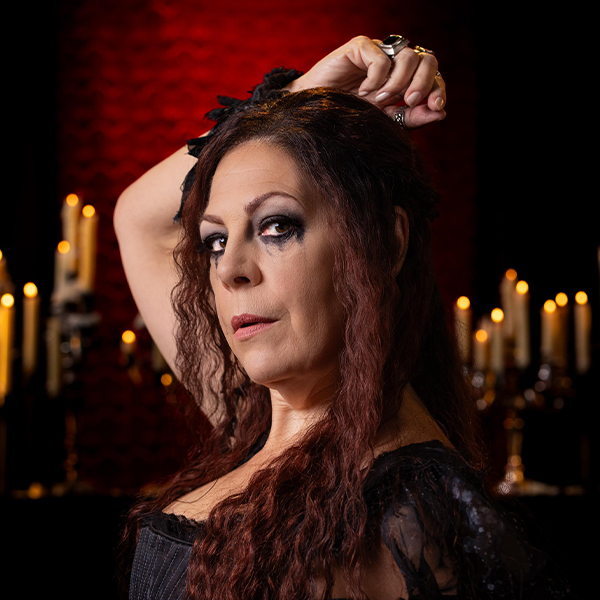
Pagliacci, “Nedda! Silvio! A quest’ora?”
Ruggero Leoncavallo
Cavalleria rusticana & Pagliacci tickets
Ruggero Leoncavallo composed 11 operas, but he’s remembered for only one of them, Pagliacci (Clowns), which premiered in Milan in 1892. A powerfully dramatic score, it’s often paired with Pietro Mascagni’s Cavalleria rusticana (Rustic Chivalry), which preceded it by two years. These works, in fact, are commonly referred to as opera’s “heavenly twins”! The Pagliacci plot stemmed from events in a murder case tried in the court where Leoncavallo’s own father, a judge, was presiding.
Amid a drama that builds gradually to a truly scorching intensity, this score has something of a respite in the rapturous lyricism of the soprano/baritone duet. Nedda, an actress, is married to Canio, who leads their troupe of traveling players. Just a few hours before the troupe is scheduled to perform, Nedda is visited secretly by Silvio, a villager who’s fallen in love with her. In deeply heartfelt phrases, he begs her to run away with him, to which she responds passionately yet also with apprehension, before finally admitting that she loves him.
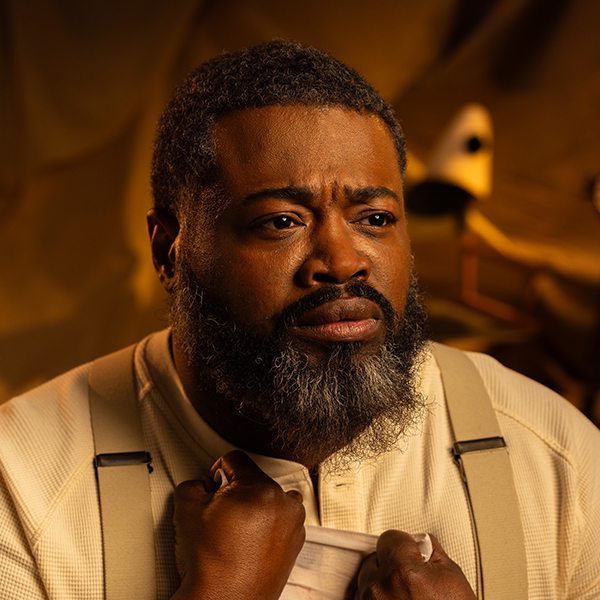
Così fan tutte, “Alla bella Despinetta”
W.A. Mozart
Così fan tutte tickets
Following up on the triumphs they’d enjoyed with Le nozze di Figaro (The Marriage of Figaro) and Don Giovanni, Wolfgang Amadeus Mozart and his librettist, Lorenzo Da Ponte, gave Vienna their great success of 1790, Così fan tutte (That’s What All Women Do). The two collaborators, always working with perfect understanding, brought all their brilliant wit, their comic ingenuity, but also ultimately their rich humanity, to the six characters figuring in this comparatively intimate work. Although the arias and duets are all immensely rewarding musically, the heart of Così is its ensembles, which require the absolute maximum in both precision and musical rapport from the performers.
That applies particularly to the opera’s several sextets, the first of which occurs midway in Act One. Suspicious of women’s fidelity, Don Alfonso bets two young officers, Ferrando and Guglielmo, that their fiancées, sisters named Fiordiligi and Dorabella, can’t remain faithful for twenty-four hours. Pretending to go to war, the men bid their beloveds farewell, but they soon return in disguise. Feigning desperate lovesickness, they proceed to woo the sisters, who are outraged, although their maid, Despina, and Don Alfonso urge Fiordiligi and Dorabella to be more receptive.

Madama Butterfly, “Addio, fiorito asil” and “Un bel dì”
Giacomo Puccini
Madama Butterfly tickets
The premiere of Giacomo Puccini’s Madama Butterfly, at Milan’s La Scala in 1904, couldn’t have been more devastating for the composer. (The leading lady that evening, soprano Rosina Storchio, was so offended by the audience’s behavior that she refused to perform the title role again in Italy.) Fortunately, Puccini was able to revise the opera significantly, and just a few months later in Brescia, it earned a notably enthusiastic reception. Puccini and his two librettists, Giuseppe Giacosa and Luigi Illica, were triumphantly successful in adapting the story from David Belasco’s play, itself based on a novella by John Luther Long. Butterfly stands today as one of the ten most popular operas internationally.
The opera’s leading tenor, the American naval lieutenant B. F. Pinkerton, has married a geisha, Cio-Cio-San — known as “Madame Butterfly” — in a Japanese ceremony. Shortly thereafter he returns to America, leaving Butterfly pregnant. Three years later he returns to Nagasaki, married to an American wife and intending to take his son back with him. The American consul makes clear to him how devastated Cio-Cio-San will be, and Pinkerton, in his anguished aria, “Addio, fiorito asil” (“Goodbye, flowered haven”), admits his remorse as he remembers the happy days he and Cio-Cio-San had enjoyed.
In the opera’s previous act, Cio-Cio-San sings her aria “Un bel dì” (“One fine day”), the best-known music in Puccini’s glorious score. It takes the form of a narration, in which the heroine reveals to her skeptical maid, Suzuki, exactly what it will be like for her on the day that Pinkerton returns to her. The exquisite restraint of the aria’s first half gives way to growing excitement in her voice, leading to the blazing conviction of Cio-Cio-San’s final phrase, “Io con sicura fede l’aspetto!” — “With unshaking faith, I’ll wait for him!”
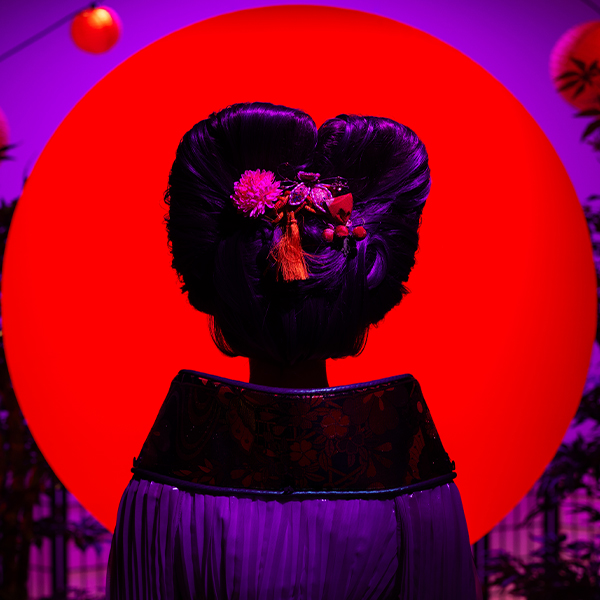
Cavalleria rusticana, Intermezzo
Pietro Mascagni
Cavalleria rusticana & Pagliacci tickets
With Cavalleria rusticana in 1890, Pietro Mascagni changed the course of Italian operatic history. Only 26 at the time, the composer received a production of the piece as his prize after it was the winning entry in an important competition for young opera composers. Mascagni took as his dramatic source the novel of the same title by Giovanni Verga, which had introduced Italians to the lives and feelings of common, contemporary people, who inhabited small towns but experienced high-intensity emotions. Just as Verga launched the “verismo” movement in literature, Mascagni did the same thing in opera. His melodies were shorter than what audiences had heard from Bellini, Donizetti, or Verdi, but he gave them the absolute ultimate in sheer passion.
That goes not only for the several memorable arias and duets, but also for the Intermezzo. In the public square moments before, the frustrated and furious Turiddu has thrown his former lover Santuzza to the ground and hurried into church to find his current beloved, Lola. Enraged with jealousy, Santuzza tells Lola’s husband, Alfio, that his young wife is now Turiddu’s lover. Hell-bent on revenge, Alfio rushes off, leaving Santuzza to trudge away in despair. With nothing but an empty stage, the show belongs for a few minutes to the orchestra, rewarded by Mascagni with an interlude boasting a glorious melody that, for sheer expressiveness, is unrivaled in any verismo opera that followed.
“Georgia on My Mind”
Hoagy Carmichael / Stuart Gorrell
“The American Songbook” is a phrase representing a collection of popular songs, Broadway hits, and memorable tunes from Hollywood — written between approximately 1920 and 1960 — that have stood the test of time. One of the most memorable songwriters from this period was Hoagy Carmichael, best known for “Stardust,” “The Nearness of You,” “Heart and Soul,” and perhaps the most captivating of all his tunes, “Georgia on My Mind” (1930). Though a masterful composer as well as an incomparable lyricist, Carmichael did sometimes ask others to collaborate with him in creating a new song. One of those people, surprisingly enough, was a successful banker, Stuart Gorrell, who’d been a friend of Carmichael’s since their days at Indiana University. (How sad that “Georgia on My Mind” was the only lyric he ever wrote!) The story goes that, upon hearing the melody of this song played by Carmichael at an evening party, the two young men stayed up all night to put “Georgia on My Mind” together.
“Lydia, the Tattooed Lady”
Harold Arlen / E. Y. “Yip” Harburg
The film comedy At the Circus (1939), starring the Marx Brothers, is remembered chiefly for a song by lyricist E. Y. “Yip” Harburg and composer Harold Arlen. Each man was a giant of both Broadway and Hollywood — among their film credits, the same year as At the Circus, was The Wizard of Oz. Apparently Harburg’s lyrics were inspired by W.S. Gilbert (yes, as in Gilbert and Sullivan), matching the Englishman’s skill and inventiveness in the song’s hilarious rhyming. Singing the song in the film is Groucho Marx’s character, Attorney J. Cheever Loophole. He delightfully relishes Harburg’s brilliance in the use of every kind of reference, from particular locales to famous American events and personalities. There have been other uses of the song on film (most memorably by the adorable thirteen-year-old Virginia Weidler, playing Katherine Hepburn’s kid sister in The Philadelphia Story) and in such popular television series as M.A.S.H. and Breaking Bad.
The Barber of Seville, “Largo al factotum” and “Dunque io son”
Gioachino Rossini
In 1816 the most celebrated comedy ever composed for the operatic stage, Gioachino Rossini’s Il barbiere di Siviglia (The Barber of Seville), had its famously catastrophic opening night in Rome. Everything went wrong, leaving Rossini deeply saddened and bitterly disappointed. In the next performance, however, the tide instantly turned and the piece began its journey to global success. Although much of the rest of Rossini’s operatic output was neglected for well over a century, Barbiere has never been out of the repertoire of opera companies large and small. Its situations are delightful onstage, and they’re illuminated by Rossini’s spectacularly distinctive music for all the major characters.
The title character, Seville’s ever-resourceful barber Figaro, introduces himself to the audience in an aria made for any gifted lyric baritone who is also an adept comedian: the “Largo al factotum” (“Make way for the factotum”), in which the text’s rapid-fire patter makes clear that the character is clearly all things to all people. One of his clients is Rosina’s guardian, Dr. Bartolo, whom she detests. In the course of the bubbling, vocally flamboyant duet, “Dunque io son” (“So I’m the one”), Figaro lets Rosina know that the young man who’s been serenading her under her window is in love with her. When the barber suggests that she write him a letter, she delightedly hands him one she’s already written!
Carmen, “Près des remparts de Séville” and “Votre toast”
Georges Bizet
One of the world’s most popular operas and celebrating its 150th anniversary this year, Georges Bizet’s Carmen (1875) is irresistible to all rich-voiced, charismatic mezzo-sopranos. For more than a century, playing her as hands-on-hips/rose-in-teeth seductress was the prevalent tradition. In recent decades singers and their stage directors have begun to explore the character’s Roma element in greater depth. More than previously, today’s Carmens also strongly assert the character’s stature as a woman who, while living according to her own rules, can’t forget that ultimately it’s the power of fate that will govern her life.
In both of her appearances onstage in Act One, Carmen can really turn on the charm. One of those moments is an aria written in the form of the Spanish dance in triple time known as a “Seguidilla.” At this point Carmen has been arrested for wounding one of her fellow workers in Seville’s cigarette factory. One of the dragoon guards, the corporal Don José, must take charge of her while his superior writes up the order for her to be taken to jail. Carmen spends the waiting time singing her “Seguidilla” to José. Playing with Bizet’s delicious melody, the singer portraying Carmen can enjoy herself thoroughly as the character invites José to join her at a tavern, where they will drink manzanilla and dance the night away.
In Act Two, which takes place at the tavern, the bullfighter Escamillo is all flamboyance and charisma. He delights Carmen, her two friends, and the rest of the crowd with an exciting description of everything the public can expect when they watch him fight a bull. The refrain, beginning with the words “Toréador, en garde,” is justly famous — in fact, it's one of the most popular melodies in the entire history of opera!
Program notes by Roger Pines
Roger Pines writes regularly for Opera magazine (U.K.), programs of America’s most distinguished opera companies, and major recording labels. A faculty member of Northwestern University’s Bienen School of Music, he has also been heard since 2006 as a panelist on the Metropolitan Opera “Opera Quiz” broadcasts.
Explore the full 2025/26 Season, including Salome, El último sueño de Frida y Diego, and an array of special events — join us at Lyric!
Credits
Lyric’s 2025/26 Season is presented by the Robert and Penelope Steiner Family Foundation.
Sunday in the Park with Lyric is generously supported through an endowment by an Anonymous Foundation with additional support from the Rhoda & Henry Frank Family Foundation, Sipi Metals Corporation, The Recording Industry’s Music Performance Trust Fund, and the Film Funds Trust Funds.
Maestro Enrique Mazzola is generously sponsored by Alice & John Butler, H. Gael Neeson, Sylvia Neil & Daniel Fischel, the Robert and Penelope Steiner Family Foundation, Mary Stowell, and the Zell Family Foundation as members of the Enrique Circle.
Lyric Opera of Chicago thanks its Official Airline, United Airlines, and acknowledges support from the Illinois Arts Council.
Photo credit: John Shaw/Lyric Opera of Chicago
